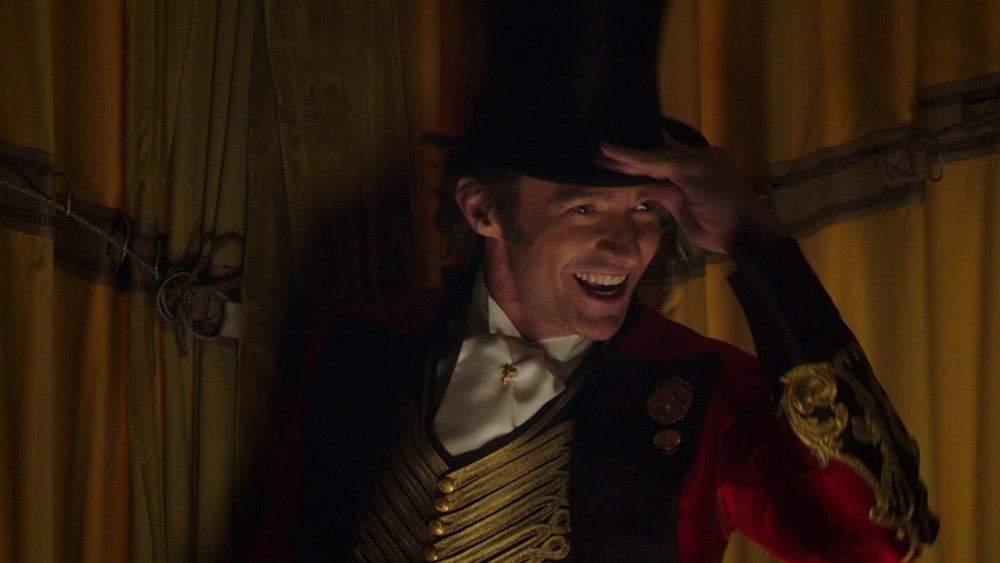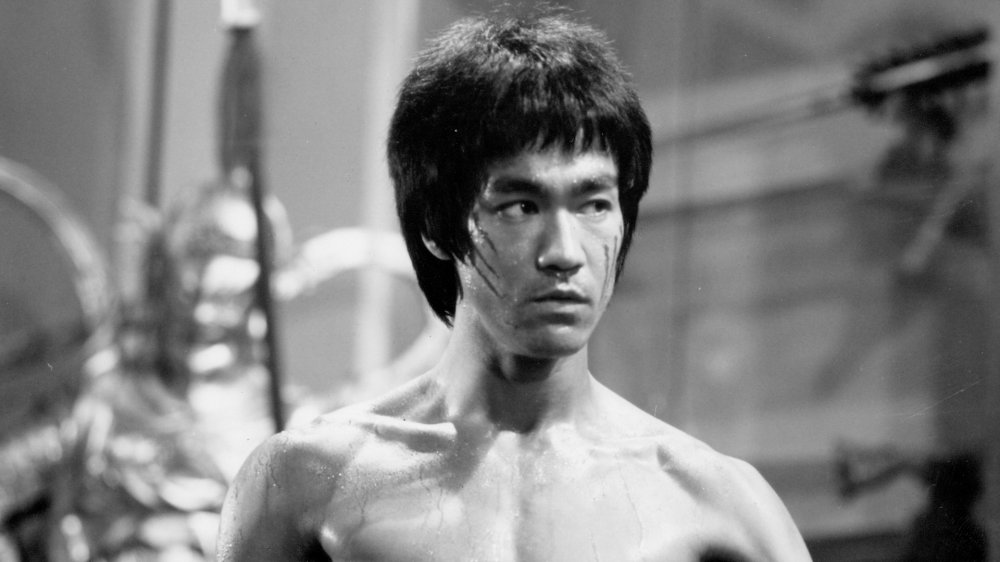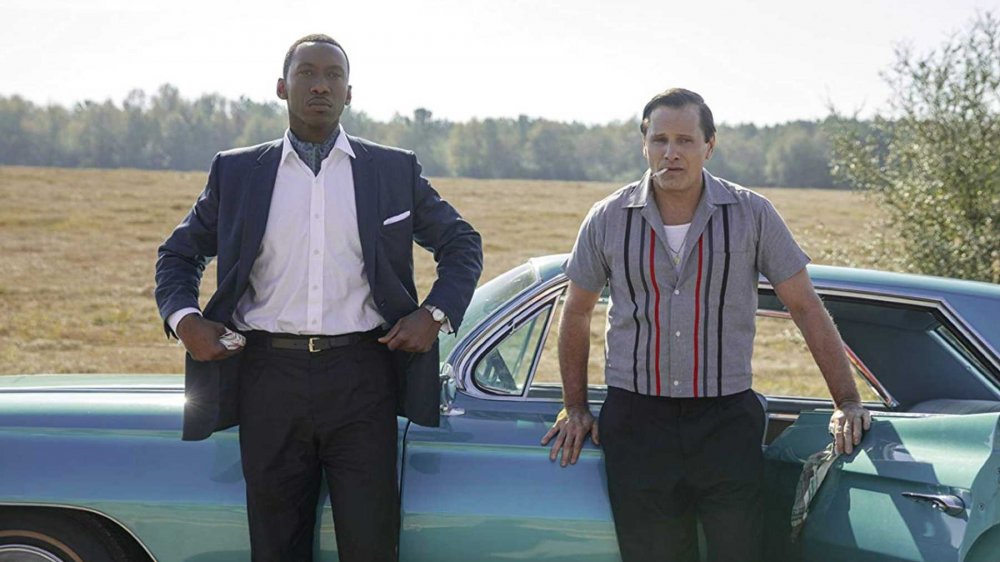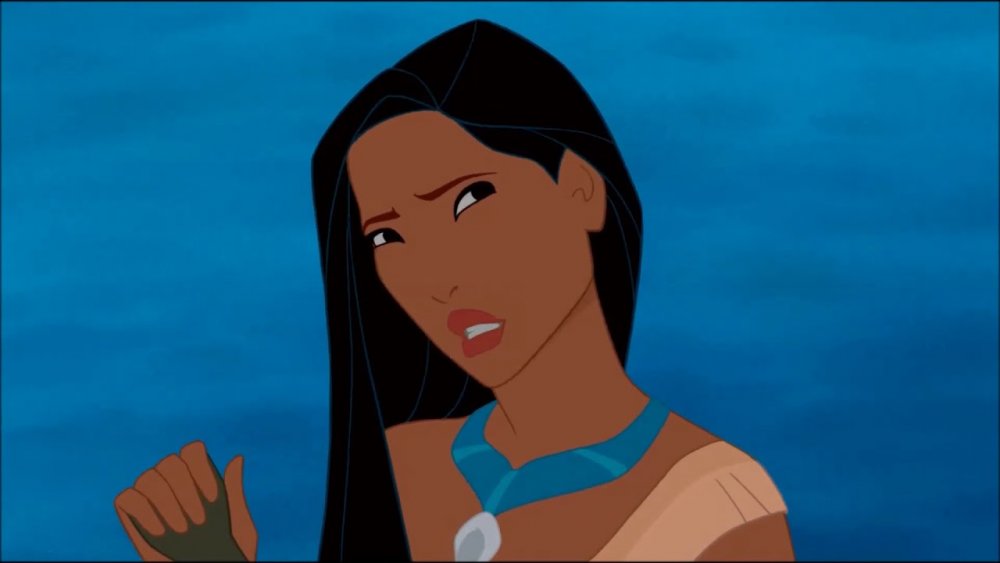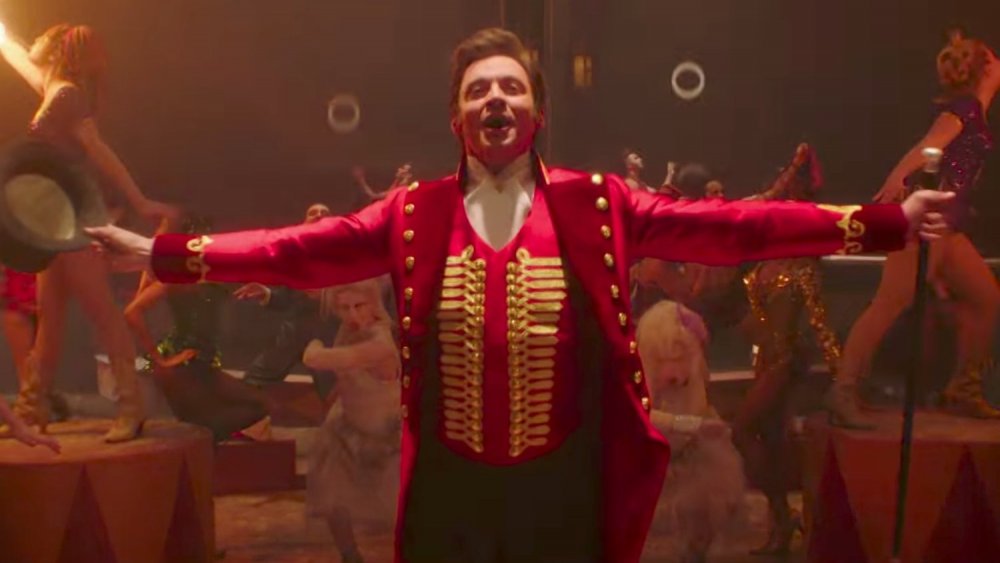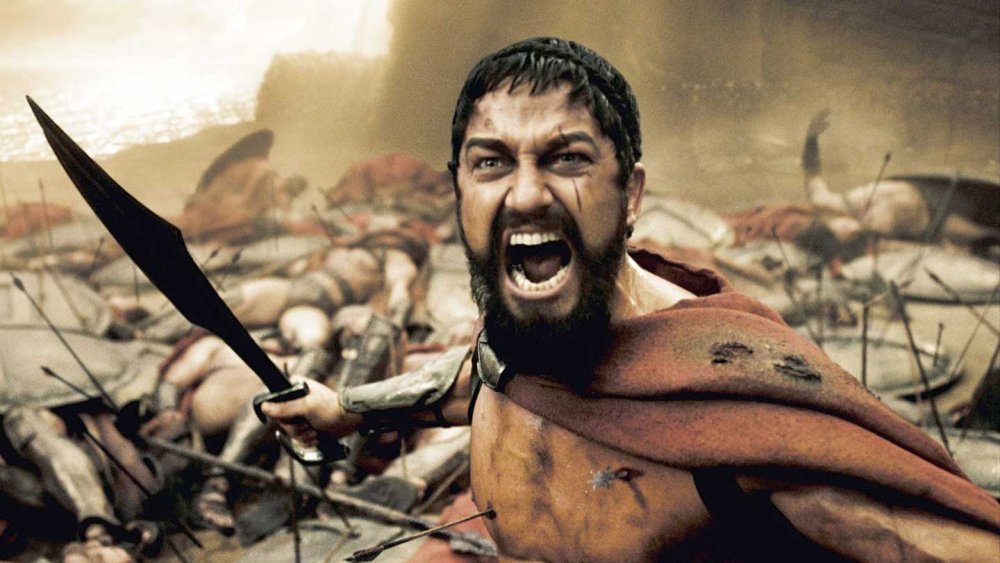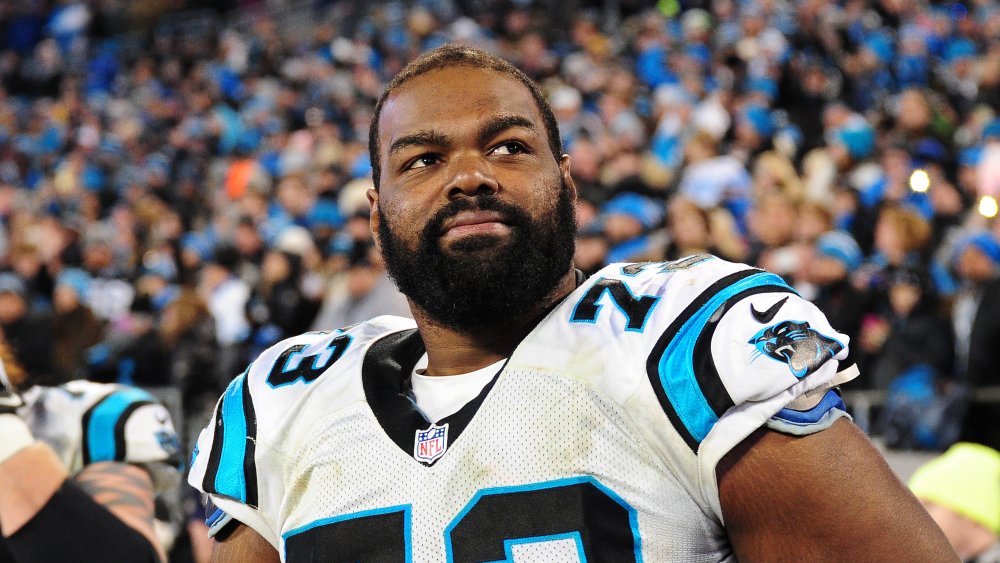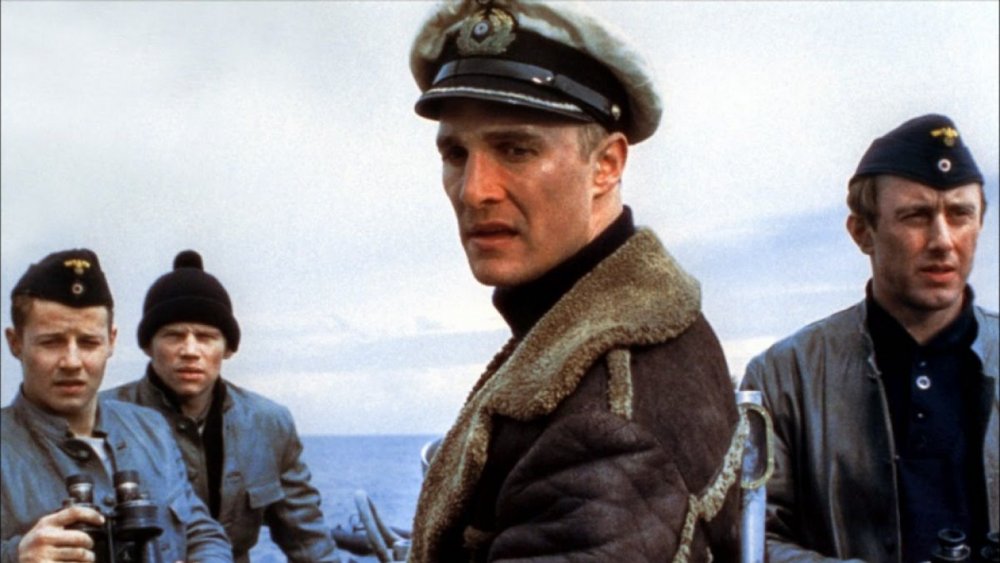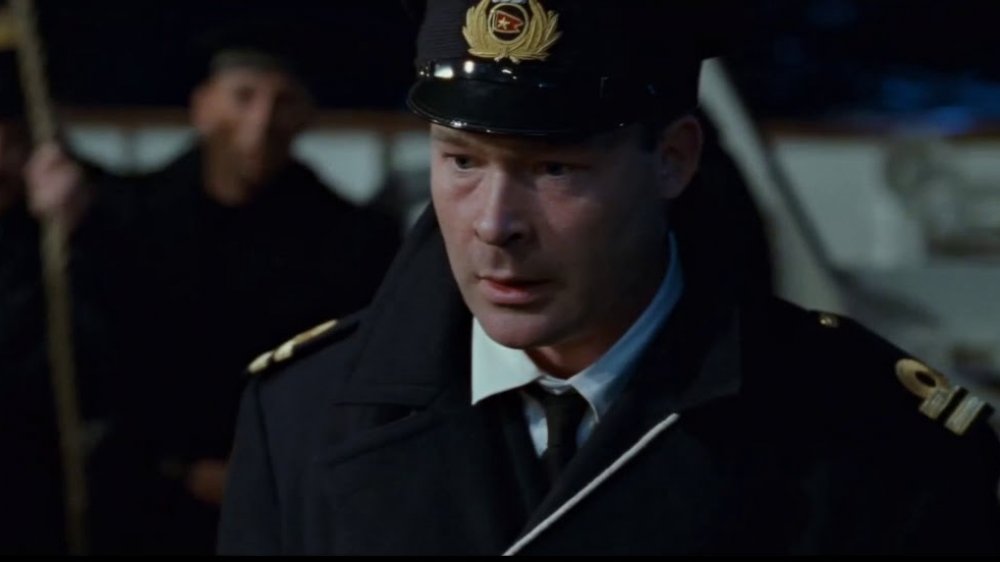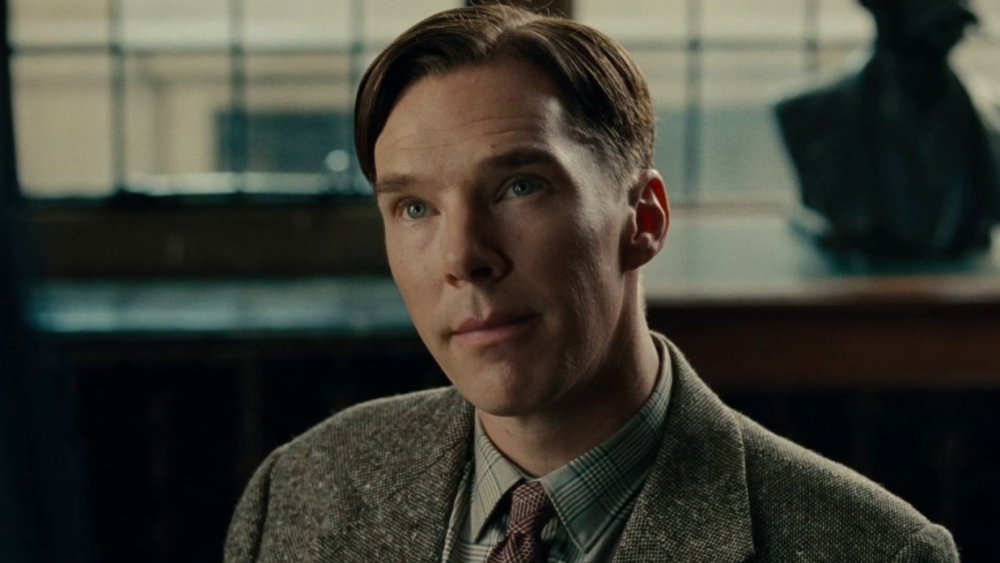Real People That Hollywood Got Wrong On Screen
For as long as stories have been told, characters have often been painted as ordinary people going through extraordinary events. In fiction, there is no limit to how extraordinary those events might get. When dealing with actual human beings, however, writers are more bound to the truth. Because the story is hinged to a real person, the storytellers typically feel a greater sense of responsibility to portray the character accurately. That doesn't go for everyone, though.
Some writers and filmmakers are, apparently, much more liberal when recreating real people for the big screen. They may exaggerate certain qualities, add in new events for the sake of storytelling, or rewrite history altogether. This creative license may go over well with audiences, but the real people being misrepresented or their families are not always as forgiving. These allegedly inaccurate portrayals have led to outrage and lawsuits. Films have been slammed for being irresponsible and even harmful for audiences. Sometimes, the negative feedback is so powerful, Tinseltown stops casting certain stars altogether. Here are some of the real people that Hollywood got wrong on screen.
Once upon a time...
Quentin Tarantino loves blending historical and fictional moments and characters. He's provided alternate histories in Inglourious Basterds and gave realistic glimpses at the barbarities of slavery in Django Unchained. In Once Upon a Time in Hollywood, he mashed reality and fiction together once more. Into the mix of made-up events and characters, like Rick Dalton and Cliff Booth, Tarantino infused his interpretation of historical people, such as Bruce Lee.
Those loyal to Lee took issue with how the martial arts legend was portrayed in the film. "He was never, in my opinion, cocky," said Dan Inosanto, Lee's former protégé, in a Variety interview. "Maybe he was cocky in as far as martial arts because he was very sure of himself. He was worlds ahead of everyone else. But on a set, he's not gonna show off." Lee's daughter, Shannon, told the Los Angeles Times, that "the character was like a caricature of himself and made him look stupid, silly and made to be insultingly 'Chinesey.'"
While Tarantino defended his portrayal, saying, "Bruce Lee was kind of an arrogant guy," he suggested that Booth and Lee's physical encounter was fictional. Yet, according to The Joe Rogan Experience, it may have been based on an actual encounter with stuntman and martial artist Gene LeBell. "If Bruce Lee fought Gene LeBell [LeBell] would grab a hold of him and obliterate his head on the concrete one hundred out of one hundred times," Joe Rogan said.
Green Book from a white perspective
Green Book won the Academy Award for Best Picture in 2019, but the win was divisive, with some even calling it the worst film to ever take home that honor. The family of one of the characters portrayed in the film, Don Shirley, felt that it misrepresented the historical subject material greatly. In fact, they argue that the context of the film was all wrong, saying that Tony Vallelonga wasn't hired to drive Shirley on a tour of segregated venues throughout the South, but they were actually on a tour of Historically Black Colleges and Universities.
The family claims that Green Book filmmakers told the story they wanted to tell and not the one that actually happened. "They didn't (include) my family," Shirley's niece, Karole Shirley Kimble, told USA Today. "They didn't listen to the other side of the story. They listened to other whites talk about my uncle." Co-writer Nick Vallelonga, the son of the Vallelonga in the film, played by Viggo Mortensen, said that was how Shirley wanted it. "Don Shirley himself told me to not speak to anyone. He told me the story that he wanted to tell," he said backstage at the Oscars (via IndieWire). "And, also he told me, 'Don't make it until I pass away.' So I just kept my word to that man, I wish I could have reached out to Don Shirley's family. I didn't even know they really existed until after we were making the film."
True colors of the wind
Disney doesn't have the best track record when it comes to presenting historical facts on screen, but few films can rival Pocahontas in that regard. While the 1995 film was, as Sophie Gilbert wrote for The Atlantic, a "radical story about female agency" for the times, Pocahontas has been followed by controversy since its release. The problem, critics of the film agree, is in the portrayal of Pocahontas as a willing participant in love when evidence to the contrary is overwhelming.
According to Indian Country Today, among being a victim of other atrocities, "Pocahontas was kidnapped, her husband was murdered and she was forced to give up her first child." Many people believe that reimagining something so horrific or seeking to empower Pocahontas in this tale of woe is irresponsible and offensive, especially to Native American peoples. One such person, a reader from the Oneida Tribe of Indians of Wisconsin, responded to Gilbert's story.
"Both Pocahontas and Sacagawea are often held up as heroines in the Western perspective, their stories reduced to kinder details rather than serving the interest of the dominant culture," they wrote. "Yes, there is visibility in telling their stories, but it is a tainted visibility, a false reality rendered through the dominant culture, which seeks to ameliorate, always, the horrific methods by which they came to occupy an entire nation's worth of landmass."
The woman behind the greatest showman
There can be no doubt that Phineas Taylor (PT) Barnum was truly The Greatest Showman of his time, as the 2017 film suggests. Barnum revolutionized the American circus and made a bountiful career of showcasing his curiosities to paying audiences. While the film may hint at some of the man's deceptions, The Greatest Showman sidesteps entirely his real and very problematic career beginnings.
According to Smithsonian Magazine, "Barnum took his first real dip into showmanship at age 25 when he purchased the right to 'rent' an aged black woman by the name of Joice Heth, whom an acquaintance was trumpeting around Philadelphia as the 161-year-old former nurse of George Washington." Whether Barnum really believed the backstory he paraded Heth around with is unclear, he certainly had no issues with changing the tale from time to time. At one point, he even suggested she was a robot to lure in audiences. "What purports to be a remarkably old woman is simply a curiously constructed automaton," he once wrote of Heth.
But it wasn't just in life that Barnum disrespected Heth's humanity. According to Smithsonian Magazine, when she died in 1836, she became the star of another Barnum act. "He drummed up a final public spectacle, hosting a live autopsy in a New York Saloon. There, 1500 spectators paid 50 cents to see the dead woman cut up, 'revealing' that she was likely half her purported age."
Good guys or bad guys?
Based on Frank Miller's graphic novel, 300 is clearly a fantasy, but director Zack Snyder seems to think it was closer to the truth than most. "The events are 90 percent accurate," he told MTV. "A lot of people are like, 'You're debauching history!' I'm like, 'Have you read it?' I've shown this movie to world-class historians who have said it's amazing. They can't believe it's as accurate as it is."
In the film, the main motivation behind the Spartan and the Persian battle was freedom, but "If anyone fighting at Thermopylae represented freedom, it was Persia," Cracked argues. "Other than a few long-term POWs, they built that Persian Empire without slaves. They generally banned owning other people, whereas, as a Spartan soldier, Muscles McGee would have personally owned a bunch of slaves."
The movie also villainizes homosexuality. While the Spartans are presented as heterosexual beings, their opposition is othered. "What's more scary to a 20-year-old boy than a giant god-king who wants to have his way with you?" Snyder asked in an Entertainment Weekly interview. A Spartan also calls their Athenian rivals "boy-lovers," referencing the practice of pederasty. According to University of Cambridge professor Paul Cartledge, Spartans were the main actors in this practice. "In Sparta, it seems that pederasty was not optional at all," he said on the History Extra. "In other words, as part of the educational cycle in Sparta you were paired up with an adult Spartan warrior for mutual benefit."
Blindsided by Hollywood
Offensive linemen rarely get the same recognition as other positions, like quarterbacks or linebackers, in the NFL. Michael Oher, the subject of the 2009 film, The Blind Side, is a little different. While the film helped grow Oher's name and brand, it came with drawbacks as well. "People look at me, and they take things away from me because of a movie," he said to ESPN. "They don't really see the skills and the kind of player I am. That's why I get downgraded so much, because of something off the field ... That's why I don't like that movie.”
Yet, there's another thing about The Blind Side that Oher doesn't necessarily like, and that's his portrayal. In his book, I Beat The Odds, the football star explains his thoughts about the movie. "I felt like it portrayed me as dumb instead of as a kid who had never had consistent academic instruction and ended up thriving once he got it," he wrote. "I could not figure out why the director chose to show me as someone who had to be taught the game of football. Whether it was S.J. moving around ketchup bottles or Leigh Anne explaining to me what blocking is about, I watched those scenes thinking, 'No, that's not me at all! I've been studying — really studying — the game since I was a kid!'"
Capturing British history
In 2000, the film U-571 depicted the daring capture of a Nazi code machine by American soldiers during WWII. Written by David Ayer before he penned Training Day, the film drew from Ayer's own experiences as a sonar man in a submarine for the US Navy. There was a big problem with the movie, though, as The Washington Post points out. Though the German Enigma team was taken from a submarine in 1941, "That was before the United States even entered the war. The daring sailors who captured and boarded that U-boat were not American, but British."
As a result, British viewers weren't happy with the film, to say the least. "Hollywood is stealing our history–again!" BBC anchor Jeremy Vine griped (via The Washington Post). "Why don't they make a film about brave American fliers winning the Battle of Britain?" Then-Prime Minister Tony Blair called the film an "affront" to the British soldiers involved in the mission. "I hope that people realize these are people that, in many cases, sacrificed their lives in order that this country remained free," he said in the Commons (via The Guardian).
Even Ayer had regrets about the film. "It was a distortion ... a mercenary decision to create this parallel history in order to drive the movie for an American audience," he said on BBC Radio 4. "Both my grandparents were officers in World War Two, and I would be personally offended if somebody distorted their achievements."
History vs. storytelling
Notoriously detail-oriented director James Cameron didn't get many details wrong in his 1997 epic, Titanic. Aside from a mixup with the starfield, a mistake he amended in the 3D re-release, the errors were relatively minor and forgivable. For one family, however, the film included a detail that wasn't easy to overlook.
In Titanic, First Officer William Murdoch shoulders a large load of responsibility for the ship's collision. He also shoots men clamoring onto a lifeboat ahead of others, and he then shoots himself. This was apparently based on eyewitness accounts, but the stories are conflicting. According to WilliamMurdoch.net, some of the eyewitnesses suggest that it was Murdoch who shot himself, but others leave the man unnamed.
While Cameron's assertion was backed up by evidence, his decision to include this event is one he regrets. "I was being a screenwriter," he said in a National Geographic special. "I wasn't thinking about being a historian, and I think I wasn't as sensitive about the fact that his family, his survivors, might feel offended by that, and they were." People from Murdoch's family and hometown were hurt by the depiction. "From my own family connections and also from my father having spoken to various officers who survived, he didn't commit suicide," Murdoch's nephew, Scott Murdoch, said in a BBC interview. "If someone says to you somebody in the family committed suicide when he hadn't, you take objection."
Imitation history
The Imitation Game, with its significant award season recognition, introduced plenty of fans to Alan Turing. Yet, according to a Slate piece that compares the film with Andrew Hodges' written biography, Alan Turing: The Enigma, much of what we saw from the film's main character, was wrong. For example, Turing's homosexuality is a secret big enough to use as a plot point in the film — but not big enough to show any actual relationships — but the real Turing was apparently quite open with his sexuality. "Hodges' biography is filled with instances in which Turing boldly made advances toward other men—mostly without success," Slate's L.V. Anderson writes. "Turing also told his friends and colleagues about his homosexuality."
Then there's the main thrust of the film, that Turing was single-handedly responsible for cracking the German code machine. "A predecessor of the 'Bombe'—the name given to the large, ticking machine that used rotors to test different letter combinations—was invented by Polish cryptanalysts before Turing even began working as a cryptologist for the British government," Anderson writes. "Turing's great innovation was to design a new machine that broke the Enigma code faster by looking for likely letter combinations and ruling out combinations that were unlikely to yield results. Turing didn't develop the new, improved machine by dint of his own singular genius—the mathematician Gordon Welchman, who is not even mentioned in the film, collaborated with Turing on the design."
Hustling the hustlers
In 2015, an article appeared in The Cut that told the true story of "strippers who stole from (mostly) rich, (usually) disgusting men." That story would eventually become the inspiration behind the 2019 film, Hustlers. The film earned rave reviews and its star, Jennifer Lopez, some serious award consideration. According to Samantha Barbash, however, the person J.Lo based her Hustlers character on and the movie itself were both blatant misrepresentations of the actual people and events.
"We're putting a stop to it because she's actually misrepresenting me," Barbash told the New York Post. "I was never a stripper. It's defamation of character." One source who worked with the women portrayed in the film had other issues. "These girls never did pole-dancing, so if that's in the movie, it's a fairy tale," he said. "I don't see how J-Lo, who is Miss Goodie Two Shoes, is gonna play [Barbash] realistically. ... These were bad girls. They drugged and robbed people."
Barbash and her legal team claim that the filmmakers used her likeness with shady tactics. "My client is offended that the defendants used her likeness to make over $150 million, defamed her character and tried to trick her into selling her rights to the production company for a mere $6,000," Barbash's lawyer, Bruno V. Gioffre, Jr. told Rolling Stone. The resulting lawsuit seeks $40 million in damages, allegations to which the filmmakers deny.

